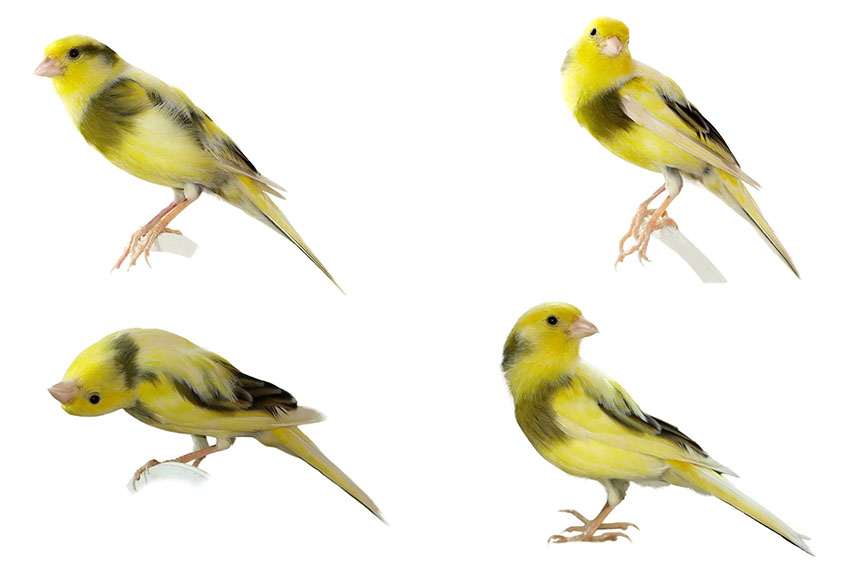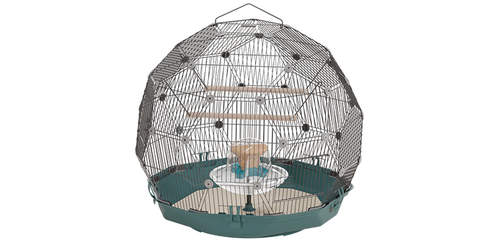This is what all that male strutting and singing has been about, but there are still formalities involved. The cock bird now waits for the hen’s body language to invite him to mate. In Zebra finches (and many other species), the hen squats in the ‘mating position’, lifting and vibrating her tail. The male then mounts her, and impregnates her with a perfunctory ‘cloacal kiss’, in which the all-purpose vents of the two birds make brief contact. His wings will flap as he pushes against her, and the procedure is over in a couple of seconds.
Zebra finches, Bengalese finches, Canaries and many others simply mate on a perch or the ground, but a few – such as the Gouldian finch, Diamond firetail, Cut-throat and Strawberry Finch – seek the privacy of the nest box for copulation. They will usually mate several times while they continue putting the nest together.

Receptive Canaries have a keen eye for body language in their prospective partners
Finch Mating Problems
It’s very rare for a healthy, non-hybrid finch to be infertile, and a mating pair will nearly always produce a clutch of anything from two to eight eggs. Problems can occur in mixed aviaries and birdhouses, however. Again, it’s rare, but sometimes a cock bird will pair off with another male, or will woo a female of a different species. Neither scenario is going to end happily for the keen bird breeder.
Breeding Cages
With indoor birds, you’ll have the best chance of successful chick-rearing if you provide custom-made breeding cages, with nest box attached. These are available through pet suppliers. In a birdhouse or aviary you will need an enclosed nesting area as part of the setup.
A breeding cage should measure at least 60 x 30 x 30 cm. It will need to be equipped with standard finch accessories – at least two perches, a mineral block, a cuttlefish bone, and plenty of food and water. The cage will also need two doors – one for access (for your hand) and the other for allowing the birds passage to and from the nesting box.
Once the chicks have weaned (at about six weeks) you will need to transfer them to a large cage, or a separate section of the aviary. This too should be supplied with plenty of food, water and perching space.




Comments
There are no comments just yet